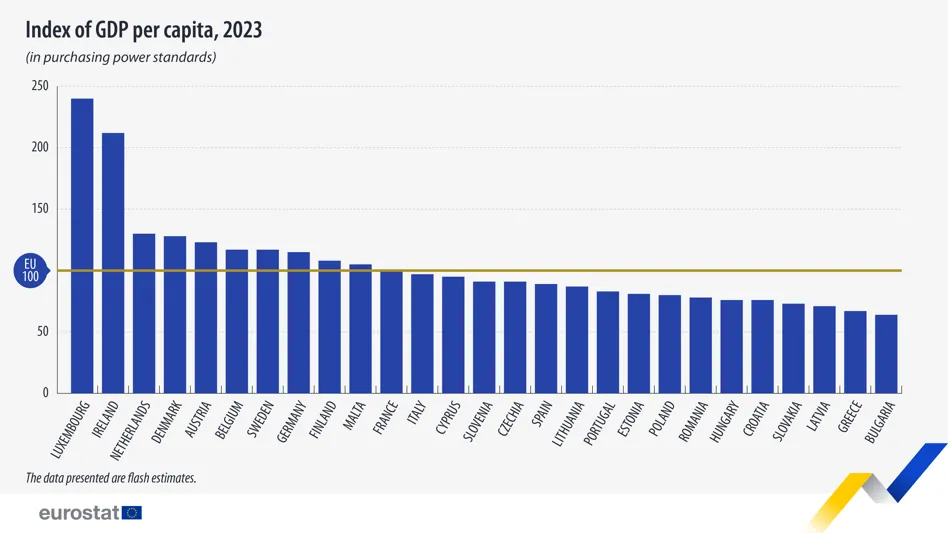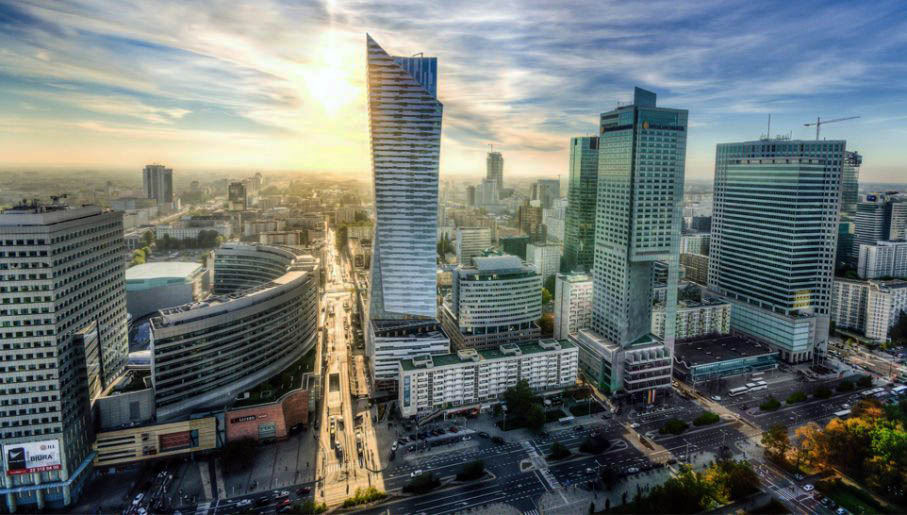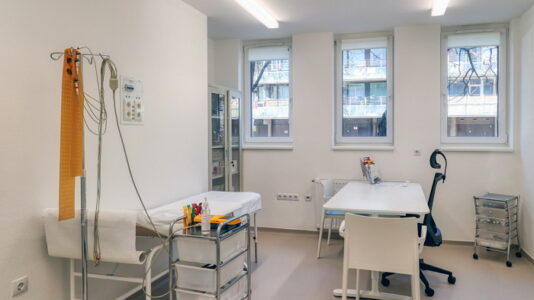In 2023, Poland reached a historic milestone, narrowing its gap with the European Union’s average gross domestic product (GDP) per capita and recording a figure of 80 percent of the bloc’s average.
Last year, the GDP per capita, expressed in terms of purchasing power standards, varied from 64 percent of the EU average in Bulgaria to 240 percent in Luxembourg. Poland has been increasingly closing the gap with the EU average, achieving a record level for this indicator.
Eurostat released the initial estimates of purchasing power parity and GDP for last year, revealing that 11 EU countries had a GDP per capita in purchasing power parity above the EU average.
Luxembourg and Ireland recorded the highest levels, standing at 140 percent and 112 percent above the EU average, respectively. Other countries above the EU average included the Netherlands (30 percent above), Denmark (28 percent above), Austria (23 percent above), Belgium and Sweden (both 17 percent above), Germany (15 percent above), Finland (8 percent above), Malta (5 percent above) and France (1 percent above).
On the other end, Bulgaria had the lowest GDP per capita, 36 percent below the EU average, followed by Greece (33 percent below) and Latvia (29 percent below).

Poland has been consistently reducing its distance to the EU average. In 2023, Poland’s GDP per capita, expressed in purchasing power standards, was at 80 percent, or 20 percent below the EU average, placing Poland 21st among member states.
Though this position may seem distant, reaching an 80 percent GDP per capita level is a historically good result for Poland. The country has never before achieved such a high indicator. It is worth noting that at the time of joining the EU in 2004, Poland’s GDP per capita was only 50 percent of the EU average.
In 2022, Poland’s GDP per capita was 79 percent of the EU average, and in 2021, it was 77 percent.
Economists explain Poland’s relatively fast pace of catching up with the EU average as a result of the country’s rapid development and the stagnation in some of the larger EU economies, such as Italy and Spain. The EU is developing more slowly, allowing Poland to catch up more quickly.





